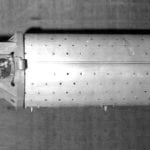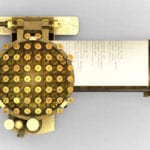 Technology
Technology  Technology
Technology  Humans
Humans 10 Everyday Human Behaviors That Are Actually Survival Instincts
 Animals
Animals 10 Animals That Humiliated and Harmed Historical Leaders
 History
History 10 Most Influential Protests in Modern History
 Creepy
Creepy 10 More Representations of Death from Myth, Legend, and Folktale
 Technology
Technology 10 Scientific Breakthroughs of 2025 That’ll Change Everything
 Our World
Our World 10 Ways Icelandic Culture Makes Other Countries Look Boring
 Misconceptions
Misconceptions 10 Common Misconceptions About the Victorian Era
 Mysteries
Mysteries 10 Strange Unexplained Mysteries of 2025
 Miscellaneous
Miscellaneous 10 of History’s Most Bell-Ringing Finishing Moves
 Technology
Technology Top 10 Everyday Tech Buzzwords That Hide a Darker Past
 Humans
Humans 10 Everyday Human Behaviors That Are Actually Survival Instincts
 Animals
Animals 10 Animals That Humiliated and Harmed Historical Leaders
Who's Behind Listverse?

Jamie Frater
Head Editor
Jamie founded Listverse due to an insatiable desire to share fascinating, obscure, and bizarre facts. He has been a guest speaker on numerous national radio and television stations and is a five time published author.
More About Us History
History 10 Most Influential Protests in Modern History
 Creepy
Creepy 10 More Representations of Death from Myth, Legend, and Folktale
 Technology
Technology 10 Scientific Breakthroughs of 2025 That’ll Change Everything
 Our World
Our World 10 Ways Icelandic Culture Makes Other Countries Look Boring
 Misconceptions
Misconceptions 10 Common Misconceptions About the Victorian Era
 Mysteries
Mysteries 10 Strange Unexplained Mysteries of 2025
 Miscellaneous
Miscellaneous 10 of History’s Most Bell-Ringing Finishing Moves
Top 10 Paper Facts And Inventions
The humble page is busier than it looks. When it is not inflicting small but strangely painful cuts, things get serious at the paper plane championships. Paper folding also has an insane barrier that not even a machine can beat.
Peculiar facts aside, paper is a great material for inventors. Recent creations could one day replace centrifuges and body parts, while there is already a type of paper that holds as much power as a supercapacitor and another that is stronger than iron.
10 The Yellowing Factor
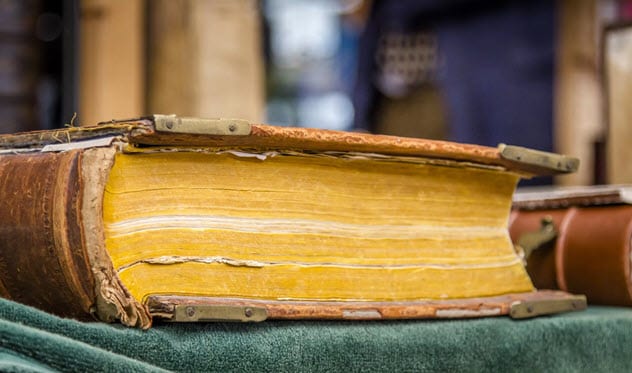
There is an interesting reason why old paper turns yellow. Most paper consists of cellulose and lignin, two elements derived from wood. Cellulose is a colorless substance but also the reason why a sheet is white. It reflects light, making the paper appear white to the human eye.
On the other hand, lignin turns aging books yellow. The color shift happens when lignin is exposed to air and light and absorbs too many oxygen molecules. As a result, lignin develops a weakened structure that only reflects the wavelengths for yellow or brown.
To produce a quality paper, manufacturers bleach their material to suppress lignin’s effects. Interestingly, this is why a newspaper turns yellow faster than books that are decades older. Newspaper sheets are cheaply made, meaning that nobody bothers to bleach the lignin.[1]
In the end, the only way to preserve paper indefinitely is to seal it in a dark box, suck out the oxygen, and fill it with an inert gas like nitrogen.
9 Why Paper Cuts Hurt
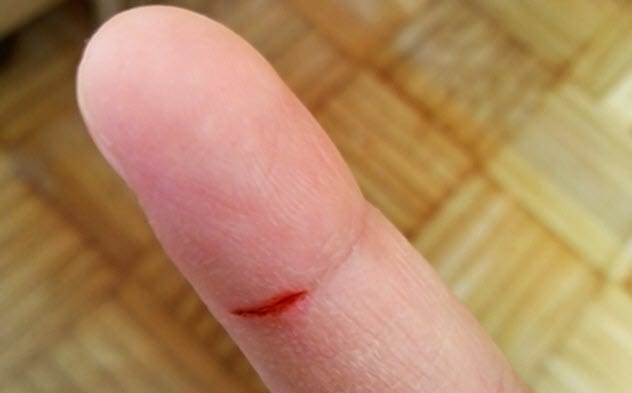
As a human being, one inevitably encounters the taxman, the flu, and the paper cut. Getting sliced by paper is not the worst thing in the world. However, this fact is never appreciated by anyone the moment a page behaves like a razor or, even worse, when it slices through the tongue while licking an envelope.
The squeamish horror almost equals the pain of the wound itself. But therein lies the question. How can a tiny cut hurt so much? It has nothing to do with the paper and everything to do with the location.
The horrible ouchies happen mostly on the tongue, lips, and fingertips. By nature, these regions are designed to be sensitive, packed with nerves to determine textures and temperatures.[2]
Unfortunately, the extra nerves also heighten pain perception. Adding to the insidious nature of this trivial wound is the fact that we use the tongue, lips, and fingers countless times during the day. One wrong move and that paper cut reopens with a vengeance.
8 Paper Airplane Record
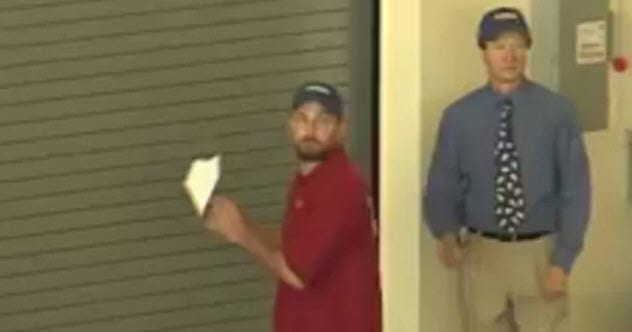
Throwing paper airplanes is serious business. There are dedicated individuals who want their planes to soar for longer than anyone else’s. In 2003, Stephen Kreiger hurled his aircraft for a record-breaking 63.2 meters (207 ft, 4 in). Nobody managed to unseat Kreiger until 2012.
The new plane was special. To be fair, it was just a folded piece of paper. However, its creator, John Collins, had practiced his craft since childhood and also did origami, the Japanese art of folding paper.
Collins did not throw his own plane. On the day, he allowed Joe Ayoob to do the honors. Ayoob, a former college football player, believed it took strength, training, and finesse to turn a paper airplane into a champion.
Ayoob threw the plane in a hangar at McClellan Air Force Base in California. The combination of a dedicated designer and devoted “pilot” worked wonders. When it touched down, the plane had flown 69 meters (226 ft, 10 in).[3]
7 Paper From Plastic Bottles
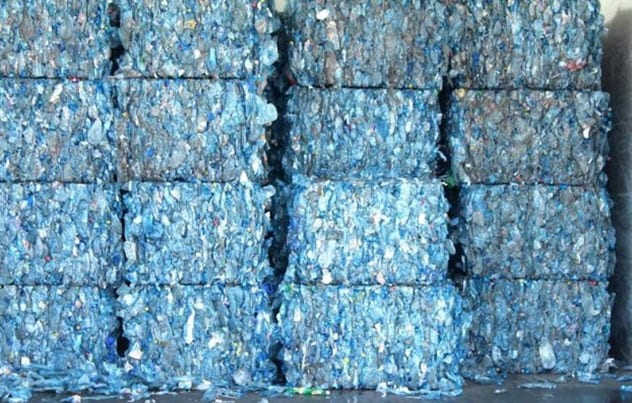
In 2015, entrepreneurs from Mexico announced that they could turn waste plastic bottles into paper. More precisely, to take polyethylene terephthalate (PET) bottles and convert them into mineral paper. The latter also goes by the name of stone paper or peta paper.
While the process of plastic-to-paper has been done before, the Mexican version used a process that is 15 percent cheaper and the paper is phytodegradable and waterproof. The production is also free of water and trees, two great environmental perks.[4]
To produce a ton of mineral paper, around 235 kilograms (518 lb) of plastic is required. The bottles are broken down into pellets, heated, and rolled out into sheets. Plastic sheets may sound like a bad replacement for wood-derived paper, but they match the quality standard required for printing books, creating stationery, and making boxes.
6 The Madness Of Paper Folding
Try folding a standard A4 sheet. When the seventh—or rarely—the eighth fold looms, the paper suddenly refuses to fold. Every turn doubles the paper’s thickness, and eventually, the energy required to perform the crease becomes impossible.
Recently, the notorious seventh level was challenged by a machine. The hydraulic press was tasked to fold an A3 sheet. When it tried to overpower the seventh fold, the paper exploded.
Curiously, the debris did not resemble paper but chalk. Experts believe that the explosion and the weird transformation had something to do with one of paper’s ingredients—calcium carbonate. Commonly found in limestone, calcium carbonate is used to make paper stiff and opaque. The high pressure likely caused the mineral to collapse. One scientist aptly said, “It failed like a cement column.”[5]
If paper folding had no barriers, one would reach the Moon with 42 folds and leave the observable universe, which measures around 93 billion light-years in diameter, with 103 folds.
5 The Paperfuge
A centrifuge is a valuable scientific tool. Its high-speed spinning separates materials, like blood samples, for easier diagnosis. But a centrifuge is big and expensive and needs electricity. Medical staff in developing countries or in the field often go without this essential device.
In 2017, researchers from Stanford University came up with a simple solution. Their invention only required a piece of paper, string, and other bits easily obtainable in most situations. Called the paperfuge, it also worked without electricity.
The inspiration for the device was the whirligig, an ancient toy dating back to 3300 BC. Two string handles were wound up and pulled to make a centerpiece disk spin. The toy could whirl at great speeds—exactly what the Stanford team was looking for.
Their design followed the same principle. Incredibly, the paperfuge whirred away at 125,000 revolutions per minute. During demonstrations, it isolated the malaria parasite in blood within 15 minutes. Stanford plans to mass-produce the paperfuge and dispense it to field staff and rural doctors battling tropical diseases like malaria.[6]
4 Disposable Drones
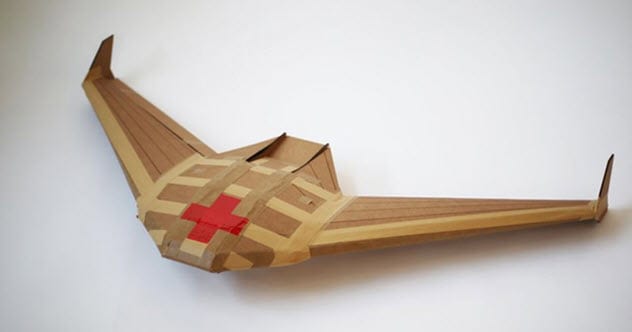
In chaotic situations like war zones or natural disasters where there is a shortage of supplies, one problem always pops up. Items need to be delivered to areas that are too dangerous or impractical to send in vehicles or aircraft—unless the latter is made of paper.
In 2017, the Defense Advanced Research Projects Agency (DARPA) of the US Department of Defense released information about one of its new programs. DARPA is known for its out-of-the-box thinking. But in this case, ICARUS (Inbound, Controllable, Air-Releasable, Unrecoverable Systems) is pure genius.[7]
The idea is to create disposable drones made of cardboard. Called APSARA (Aerial Platform Supporting Autonomous Resupply/Actions), they carry a minimalist GPS system and a battery. The paper planes are designed to drop their cargo and disintegrate. The one-way drones could become one of the most cost-effective and safe ways to deliver small items during a disaster.
3 Power Paper
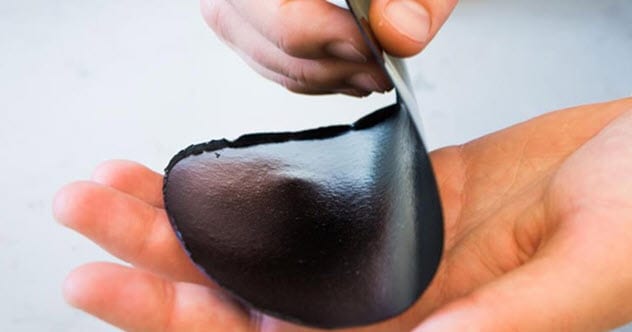
The global need for electricity is growing. Unfortunately, current capacitors and batteries require a lot of metal. Some also contain dangerous chemicals.
In 2015, a Swedish invention promised to erase the toxic and metal elements and make a cheaper power alternative that performs better. The so-called “power paper” resembled black paper but felt like plastic.
This unusual combination was a result of the material’s ingredients. During manufacturing, high-pressure water ripped cellulose fibers into tiny bits before mixing them with polymer-laced water. The latter was electrically charged and conductive and formed a coat around each strand. Additionally, the spaces between the tangles retained fluid that behaved like an electrolyte.
When tested, the material’s capacity to hold power was astonishing. A sheet as thick as two stacked matches that measured 15 centimeters (5.9 in) in diameter stored 1 farad of electrical capacitance. This is roughly the same as many supercapacitors. The paper also took seconds to recharge, and the power’s duration was described by the inventors as “hundreds of charge cycles.”[8]
2 Nanopaper
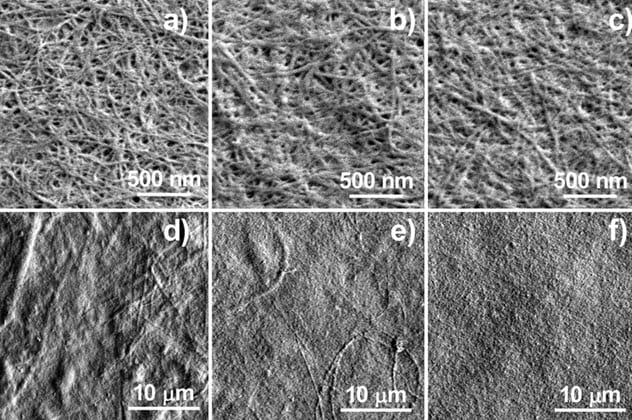
In 2008, scientists from Sweden forged paper almost as strong as steel. The strength was derived from cellulose that had been very gently turned into nanofibers.
Normal mechanical manufacturing damages the fibers, resulting in the flimsy paper with which most people are familiar. The Swedish team found a way to keep the fibers intact during the papermaking process.[9]
Incredibly, the delicate work happened during wood pulping—not exactly a phase known for its finesse. The nanopaper’s fibers were also arranged into networks that reacted intelligently under physical stress. When the paper encountered strain, the fibers dissipated it by slipping over each other as needed.
To truly understand how strong the paper is, one must look at tensile strength. The steel used in building construction has a tensile strength of 250 megapascals (MPa). Nanopaper measures 214 MPa. While not as strong as steel, it beats cast iron (130 MPa). Normal paper does not even register as high as 1 MPa.
1 Living Paper
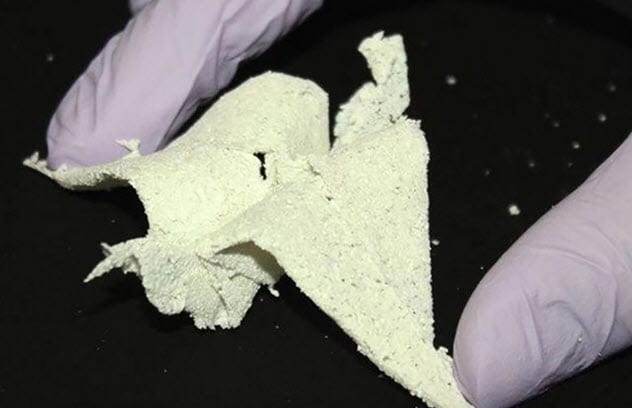
In 2017, a researcher at Northwestern University worked with bioactive ink. The year before, the fluid had been used to 3-D print ovaries, and it was undergoing further study. He accidentally knocked over the ink’s container and spilled it onto a flat surface. Surprisingly, the liquid congealed into a sheet.
Curious, the university team blended other bio-inks with polymers to produce flat sheets. They also purchased pig organs to make specific inks—for example, heart or muscle ink.
The resulting layers resembled paper that could be folded, cut into smaller pieces, and stitched. Each sheet retained chemicals and proteins from the original tissue. This opened up a world of possibilities. Ovary paper could be implanted under a woman’s skin to restore hormones and fertility. Muscle paper has great potential in reconstructive surgery.
There are even greater hopes for the biomaterial’s future. Scientists dream of using it in conjunction with other 3-D-printed biological pieces. For instance, they could pair a printed bone with muscle paper to mend a broken leg. Even better would be the creation of complete organs that are ready to be transplanted.[10]
Read about more awesome inventions on 10 Life-Changing Inventions That Were Discovered By Accident and 10 Awesome Inventions That Sprung From Celebrity Brains.


